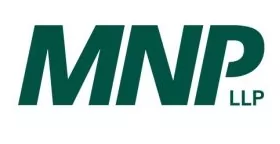In November 2013, the Fraser Institute estimated there are 600
major resource and energy projects worth $650 billion planned for Canada. In addition, every
proposed oil and gas project in the country affects at least one
First Nations community. Needless to say, First Nations communities
will play a very important role in the energy and resource sector
in Canada over the next few decades.
Natural gas projects in B.C., interprovincial oil pipelines (i.e.,
Northern Gateway, Trans Mountain and Energy East), the oilsands in
northern Alberta, potash in Saskatchewan, the Ring of Fire in
northern Ontario, hydro projects in Manitoba and Labrador and deep
sea oil in the Arctic and Newfoundland are just a sample of major
projects that impact First Nations communities in Canada.
Energy and Resource Projects Bring Risks and Benefits to
First Nations Communities
From a community perspective, these projects have multiple risks
and benefits. Aboriginal partnership in energy and resource
projects can result in an influx of financial resources to
communities and create significant economic and capacity
development opportunities. A large number of these projects impact
remote or rural communities that do not have traditional economic
development or capacity-building opportunities that other
municipalities or communities may have.
On the other hand, resource or energy projects may have a negative
impact on community land and traditional territories. The decision
to allow industry partners into a community to develop reserve land
for economic benefit is a sensitive issue for First Nations, not
unlike the decision to cut down trees in the rainforest or develop
property in a national park. Every community has a different
perspective on how they want to develop their lands, if at
all.
From Royalties to Equity Partnerships
Traditionally, industry partnerships with First Nations
communities on energy or resource projects involved a royalty
payment to the community for units extracted or energy generated.
These royalty payments are an unrestricted cash influx to the
community. Depending on how the community uses the cash flow, there
are mixed results on how impactful the economic development
opportunity will be.
First Nations communities are now actively looking for more than
royalty payments; they are looking for partnership and community
involvement. As equity partners, they are hoping to create
employment opportunities to support the project as well as capacity
development opportunities for members.
Consultation Process and Other
Considerations
Working with First Nations communities is much different than
typical industry partnerships. First Nations communities require a
due process, usually in the form of consultation, before they
engage with industry. By working with communities to understand any
sensitivities, political considerations and other cultural aspects,
the industry proponent will have a strong foundation for
potentially moving forward.
The process of formally consulting not only the community
leadership, but also the individual membership, allows the industry
proponent to build a strong working relationship with all levels of
the community. Discussing all aspects of the projects, risks and
benefits will allow the community to gain a full understanding of
what they are entering into. This process is monumental in the
success of any project with a First Nations community.
Evolving Government Support for
Partnerships
There is federal and provincial support for improved consultation
processes for First Nations communities. In Ontario, for example,
the Ontario Mining Act was amended in 2013 to include a
consultation process for all mining projects. The updated
regulations, which include some new and changed elements, are meant
to better recognize Aboriginal and treaty rights, private
landowners' claims and environmental impacts in all stages of
mineral extraction. The primary change to the act is that
government now requires industry to have greater consultation with
both Aboriginal communities and private landowners earlier in the
exploration process. Claimants are required to notify both surface
rights owners and Aboriginal communities potentially affected by
the claim at the exploration plan and permit stage. Aboriginal
communities now have the opportunity at this stage to provide
comment and feedback.
Another example is the Ontario Power Authority's Feed-In
Tariff (FIT) program for energy projects, which allows for an
"Aboriginal adder" on top of the standard $0.135 per kWh
base rate for equity partnerships with Aboriginal communities. The
Aboriginal adder significantly increases project revenues and the
resulting internal rate of return. In addition, it allows First
Nations communities to participate as equity partners and receive
annuity revenue they can use to bolster programs or services,
create trust funds for future generations, and invest in economic
development or capacity-building projects for membership.
As the Ontario FIT program has changed to a bid process,
partnering with First Nation communities will make any
proponent's bid that much more attractive when submitting to
the OPA.
Community and Industry Responsibilities
To benefit from an equitable partnership, the burden falls on both
the industry partner and the First Nations community. First Nations
communities must define the process for any industry partners. What
lands are available for development? What types of projects does
the community want to engage in? What does the desired partnership
structure look like for the community? These are all questions that
communities must answer before engaging with industry partners.
Industry partners are more receptive to communities taking a
leadership role in defining the partnership, as opposed to the
industry partner coming into a community and defining the
relationship for them. If there is a unilateral relationship where
an industry partner leads the project and the community has little
to no input, this scenario can hinder the long-term relationship
and have a negative impact on the project. Mutual input and shared
leadership responsibility from both parties is a key driver for any
project.
It is also important to ensure the partnering First Nations
community has the proper governance structure to ensure their
liability is limited, risk is managed and that the right people in
the community are involved in the project. This will allow for a
more seamless integration of the community and the industry partner
in the project.
Mutual Benefits for Both Sides
From a community perspective, there are significant benefits from
engaging in the right project. In addition to the long-term
financial benefits of these projects, there are opportunities for
capacity development that will foster community entrepreneurs to
support the projects and bid for contracts they may not have been
able to previously. This will create jobs in the community,
generate additional revenue to Nation members and lower the
dependency on crown funding. Jobs, education and sustainability
opportunities for communities can change the lives of future
generations.
For the industry proponent, there are numerous financial and
social benefits from working with First Nations communities. Aside
from developing the project, there are federal and provincial
incentives to encourage long-term partnerships between industry and
First Nations community
The content of this article is intended to provide a general guide to the subject matter. Specialist advice should be sought about your specific circumstances.


